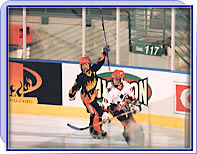
Owning and running a sports facility is an idea any sports minded person has probably had at one time or another. This is especially true if you participate at one of these facilities as an adult. You look around and see all the people participating; you do a quick calculation in your head and think to yourself…”man this guy is making a fortune here! I should quick my boring job and do this!” I can tell you that in my experience I have heard that statement countless times from customers. However, if you are really serious about perusing that dream job, you need to complete a proper plan first. In this article I will cover the three basic steps every recreational facility business plan must have.
1. Site Location and Market Demographic Study
The first step is to choose a general site location then study and develop a report on the area’s demographics. You do not have to have an exact location picked out, but you at least need the neighborhood location. From that point draw a radius out to include about 25 miles or no more that a 45 minute drive from that location. I have found that within those guidelines you will find 90% of your customer base.
The demographics you need to include are current and expected population broken down by age, current and expected income levels by household, and discretionary spending levels. There are many other items to look at but those are the big three. Look at current levels and what is expected over the next five, ten, and fifteen years. Once you have that information, put it aside, you are not ready to make any decisions yet.
2. Competitive Market Study
The second step is to look at the competition in your market area. Look at every possible competing activity within the radius you created. You must include not only similar activities that want to do, but all other possible competing activities as well. For example if you want to run an arena soccer facility, you still need to research activities such as baseball, football, and lacrosse.
The reason is that many people participate in multiple activities and it will also give you a better understanding of what people are spending on recreational activities. That will come in handy in the third step.
Include information in your study such as pricing, number of participants, length of activity or season, etc. After compiling the data, create a list of your findings and sort them with the businesses closest to your proposed location first. You will want to give more weight to those businesses closest to you.
3. Three Year Financial Plan
The final step is to create your financial plan. Here is where you take the information you learned from the first two steps and use it to see if your plan makes financial sense. Using your judgment on pricing and participation numbers you can estimate the revenue from your core activities. You should also add secondary activities such as retail, food concessions, parties, special events, etc. Estimating your costs should include labor, rent or lease, utilities, supplies, etc. There are a whole host of items to consider here.
Break the financials up into three separate years; you may want to do five years if you are pitching this idea to investors. There will also need to be a separate section that deals strictly with development costs. That includes the costs involved in buying / developing the building site, equipment purchases for the facility, and professional fees. Basically this added section includes everything needed just to get the doors open. The 3 -5 year financial plan then covers the operations from that point forward.
There is a lot that goes into such a plan, but it is needed because there is a lot of money at stake. You might find yourself having to start over if the numbers don’t work.
You can greatly reduce the time and effort needed to complete such a plan by using Rink Smart’s Business Plan Manual Template. This template includes a complete sample plan and the files you can easily edit to include your own data.
